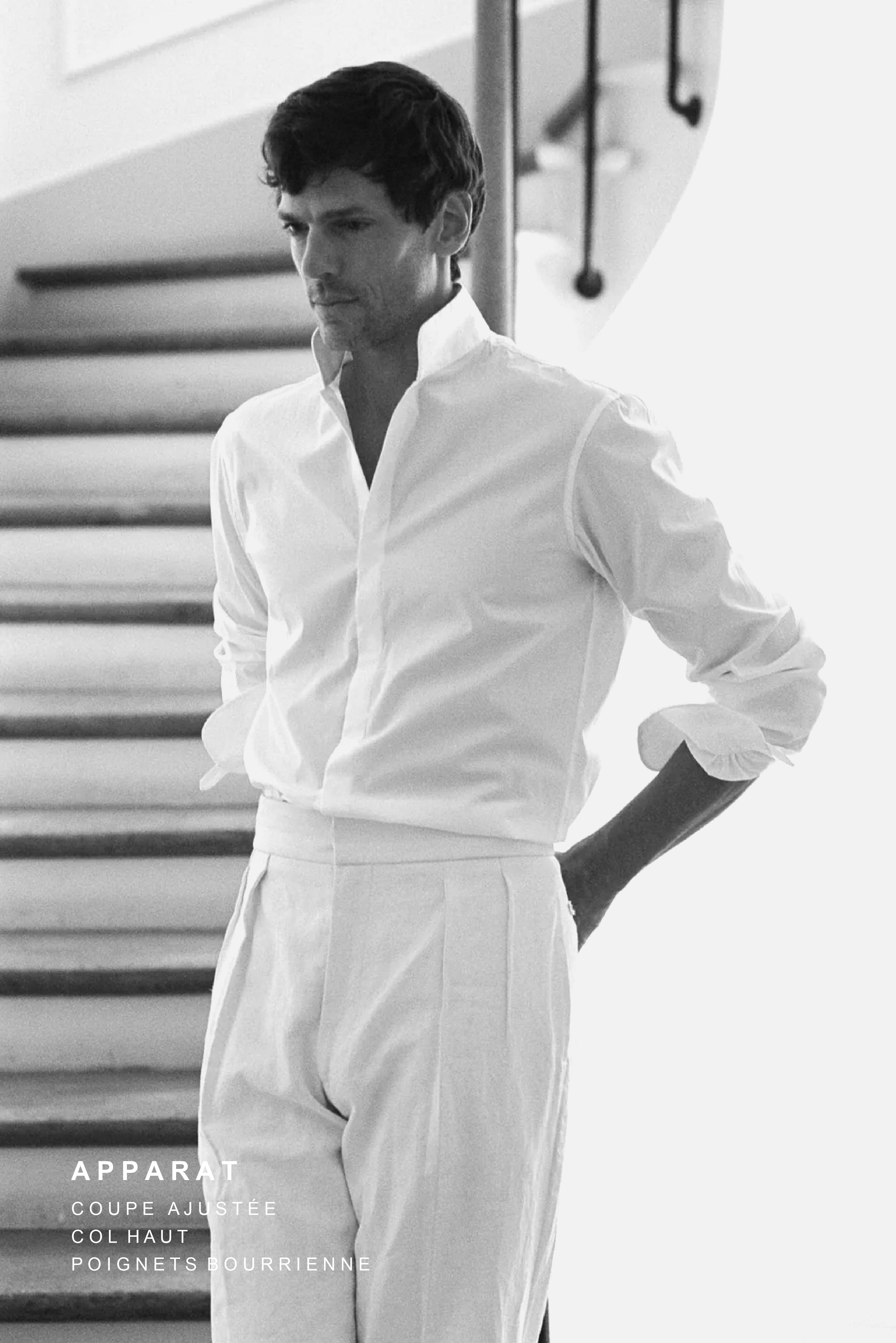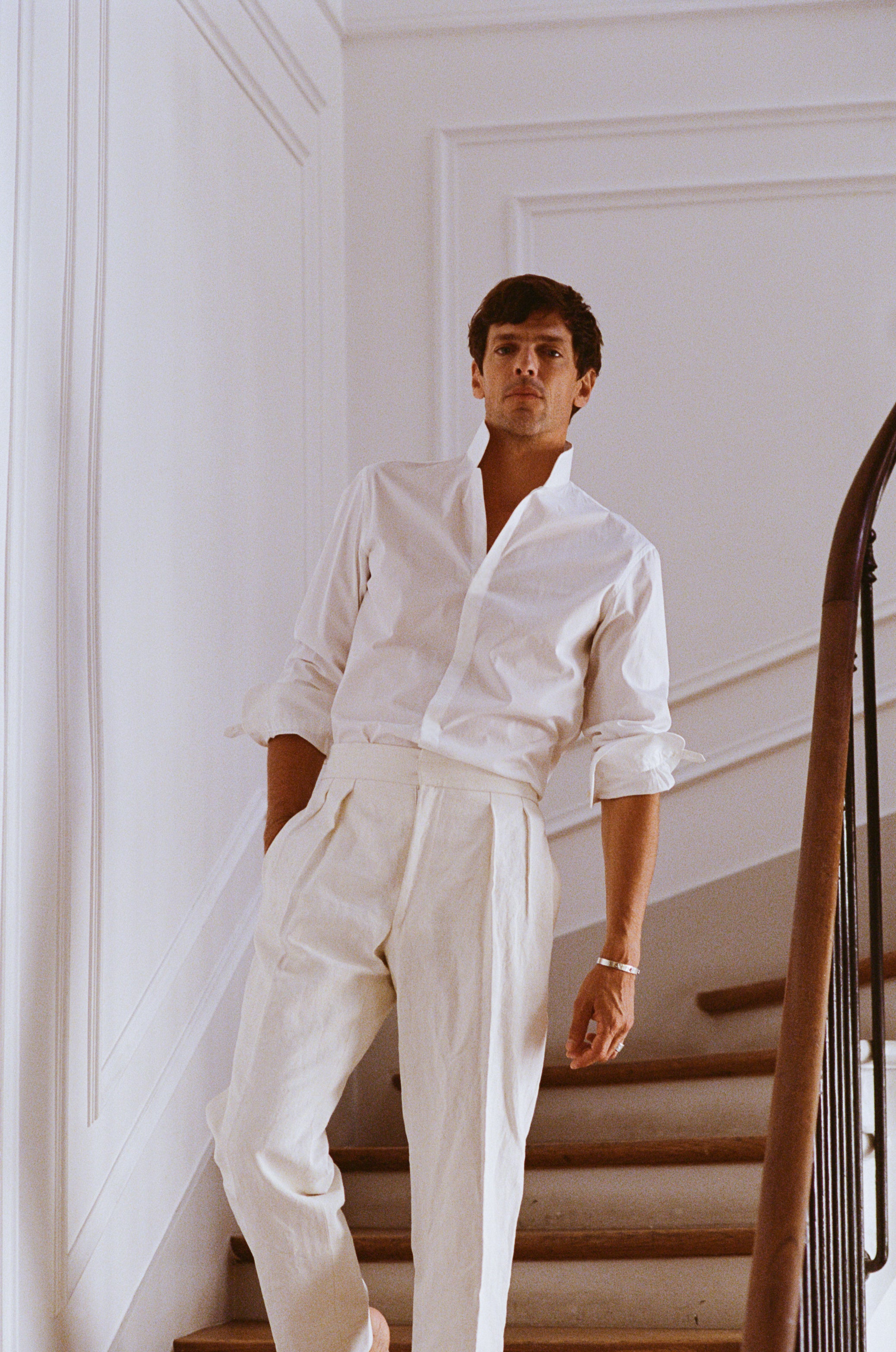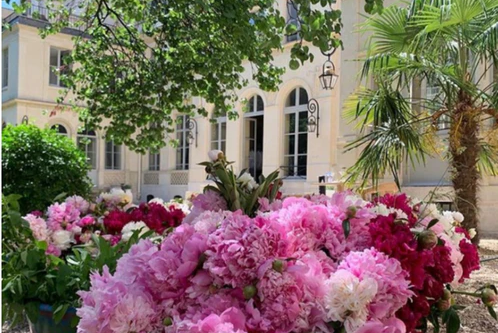
Fortunée Hamelin: Portrait of a "Merveilleuse"
Fortunée Hamelin, “influencer” of the Directoire period?
“Madame Hamelin held one of the first places among the elegant, amiable and witty stars of the worldly Tout-Paris. Zealous of fashion, fashion had made her one of the most prominent women, and there were no celebrations where she did not come to shine with her sparkling verve and her devilish beauty […] Sparkling with animation, she devoted herself to political intrigues, sometimes to amorous intrigues, applying herself to all things with a mischievous spirit”.

This description by Guy de Montbel of Fortunée Hamelin announces the color. Resuming the correspondence between his grandfather, the Comte de Montbel, minister of Charles X under the Restoration, and Mme Hamelin, Guy de Montbel published a portrait of La Merveilleuse in 1922 in the “Revue des Deux Mondes” titled The Lady of Rue Blanche: Fortunée Hamelin.
A discreet figure in the history of France, Fortunée Hamelin was, as Guy de Montbel suggests, one of the leading figures of her time. This young Creole, known for her free spirit and her avant-gardism, was one of the owners of the hotel where our brand has now taken up residence. As such, Fortunée Hamelin is one of the muses of Bourrienne Paris X. To pay homage to her, we dedicate this article to her, which retraces her extraordinary journey.

From her happy childhood in the West Indies to her inglorious beginnings in mainland France
It was on the island of Santo Domingo, then the main French overseas colony, that Jeanne Geneviève Fortunée Lormier-Lagrave was born on March 25, 1776. She was the daughter of a notable of the island, the sieur Jean Lormier-Lagrave. She grows up and flourishes, happy, in the tropics until the age of eleven, when her father decides to send her to France with her mother to complete her education, but above all to find a good match for her to marry. as quickly as possible.
She arrived with her mother by boat in Bordeaux in 1788, before returning to the capital, her mother's hometown, two years later. There, she enters a religious boarding school and learns the rudiments of life essential to young aristocrats of the time: reading, embroidery... Fortunée reveals herself in the love of reading and her sense of conversation. However, accustomed to nature and its freedom, this new cloistered and contained life does not seem at all to suit the character of the young girl.
At the age of fourteen, she is presented to the son of a former first clerk of General Control, Romain Hamelin, eight years his senior. If the young Roman is relatively insignificant for Fortunée, he has a solid fortune in which Fortunée sees the possibility of reconnecting with his past independence. Their marriage was concluded, like a smooth business venture, on July 10, 1792.

Fortunée Hamelin, the Marvelous of 58 rue d’Hauteville

The hotel now known as the Hôtel de Bourrienne was purchased by Fortunée's father on March 12, 1792. On the latter's tragic death two years later, in 1794, Fortunée inherits this Parisian hotel where she settles with her husband. It was at this same time that the Terror regime fell, giving way to the frivolity of the Directory. A real breath of fresh air for the young Creole, who can now express herself fully, without any censorship. She held sumptuous salons where the crème de la crème of the Parisian elite met.Very quickly, Fortunée Hamelin entered the very select club of the golden youth of the time, the Merveilleuses, until becoming a figurehead alongside Mesdames de Beauharnais, Tallien and Récamier. remarkable complex relationships, oscillating between friendship and rivalry. However, if her rivals were more beautiful in appearance, Fortunée surpassed them in charisma and left no one indifferent.

Indeed, the appearance of the young woman clashes in this small Parisian socialite. Rumors are starting to swirl. According to them, Fortunée was said to have been born of her father's love affair with a free mulatto from Saint-Domingue. This theory would explain, according to her detractors, her “swarthy” complexion and her singular physique, in view of the standards of beauty of the time, which earned her the nickname of “the pretty ugly”. The Comtesse de Bassanville described her as follows: “Her face was more original than beautiful. She wore the heavily accented Creole type. She had a very dark complexion, red and thick lips, white and pointed teeth, magnificent black hair, the size of a nymph, a child's foot and an extraordinary grace which made her almost the equal of the beauty queens of the world. day”. This does not prevent our Marvelous from having many lovers, and not the least: the Count of Montrond, the Marshal of the Empire Mormont, or even Chateaubriand...
Fortunée Hamelin, queen of the Directory and fashion victim
Fortunée Hamelin was also a pioneer in fashion. With her friend Joséphine de Beauharnais, she makes and breaks fashion, competing in eccentricity and ingenuity. According to the portrait that Guy de Montbel paints of her, “they imitated her manners and her attire, they copied her Titus hairstyles, à la Caracalla, her tunics à la Flore, à la Diane, au levre d’Aurore, her cothurnes, that very important part of a Marvelous woman's toilet. […] Mrs. Hamelin could even be proud of an important reform: it was she who restored the wearing of shirts”. A happy coincidence for our specialist shirt brand, which continues to keep the spirit of Fortunée alive, nearly two centuries after her death.

Nevertheless, by pushing style experimentation too far, Fortunée is not immune to fashion faux pas. A few days after 2 Messidor of Year V (June 20, 1797), one can read in all the press the scandal of which Mrs. Hamelin is the object: “Two young women get out of a pretty cabriolet, one decently dressed, the other bare arms and throat, with a single gauze skirt over flesh-colored trousers. They have not taken two steps that they are surrounded and pressed. The half-naked woman is insulted, one pulls her skirt, the other looks at her under the nose; a third gives him a bad compliment. Finally, as we are very prudish, no one could see without indignation the indecent turn of this lady from 'New France'. An honest man offered her his arm to pull her out of the crowd and lead her back to her car, where they would not let her get in. It was necessary to invoke the public force; and the cabriolet drove off to the sound of boos from the spectators.”. Rumor has it that to escape the scandal, she joined her husband in Italy, where her good friend Joséphine and her husband, Napoleon Bonaparte, were also.
Fortunée Hamelin, a convinced Bonapartist
Bonaparte's military successes only galvanized Fortunée's enthusiasm for the Bonapartist cause. She is one of his most loyal supporters, even after his fall.Under the Empire, Fortunée engages in the political police whose objective was to detect any sign of opposition to the regime Napoleon paid great attention to the reports of Mrs. Hamelin. When the latter fell, she waged a war of influence against the Bourbons who had returned to power, to the point of being invited to leave Paris by the authorities. In November 1815, Fortunée moved to Brussels.

Letter written by Fortunée Hamelin to the attention of Mrs Victor Hugo
The less than triumphant return to Paris: the beginning of the end
She obtained permission from her former friend, the Duke of Richelieu, President of the French Council of Ministers, to return to Paris, on one condition, that of becoming an informer, i.e. an opinion spy, to the recently restored crown. The ultimate insult for this committed Bonapartist. She accepts, however, because she misses life in Paris terribly. She moved to rue Blanche and held a new salon.
It was around this time that she became friends with Honoré de Balzac and Victor Hugo, whom she had the opportunity to host while she was living near the Tour d'Auvergne in the end of the 1840s.
During the last years of her life, the financial problems with which the former Marvelous was confronted gradually tarnished her brilliance, which gradually faded and finally died out on April 29, 1851. is buried in the Père Lachaise cemetery after a mass at the Notre-Dame-de-Lorette church.
One thing is certain, Fortunée Hamelin has remained faithful to her ideals and has retained great material freedom of course, but above all spiritual, at a time when the condition of women offered them few opportunities for development. . It is in this capacity that she remains one of the great inspirations of the universe of our brand: a singular woman in all her forms.
.



















